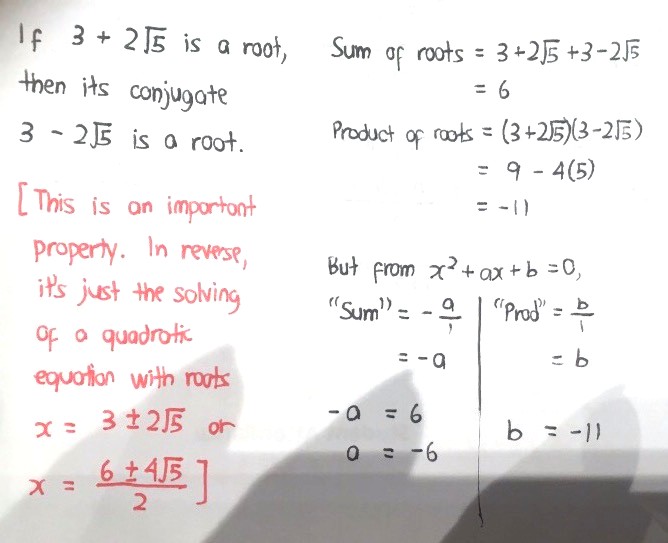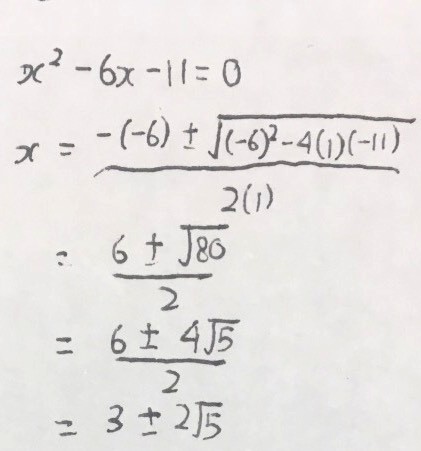Ask Singapore Homework?
Upload a photo of a Singapore homework and someone will email you the solution for free.

Question
secondary 4 | A Maths
2 Answers Below
Anyone can contribute an answer, even non-tutors.
Please help me with part a. I have never seen this type of question before so I do not know how to approach it. Thanks in advance.
If 3 + 2sqrt5 is a root
then 3 - 2sqrt5 must also be a root
See 2 Answers
2x2 + x - 4 = 0,
with integer roots. As long as the coefficients and the constant term are all rational numbers, the trick always applies.
The trick always applies in any case actually, but more so if the root contains a square root.
Actually for the case where it can be simplified, say x2 - 4x + 3 = 0, you will get x = 1 or 3. With the formula it appears to be 4 +- sqrt 4, whole thing divided by 2. It’s just harder to see in this case because the square root immediately simplifies. When the square root is more evident (as is the case in the question), then the rule becomes more obvious.
We rewrite the expression to fit (-b ± √(b² - 4ac))/2a
Since know coefficient of x² (as seen in the question) is 1, the a here = 1
3 + 2√5
= (6 + 4√5)/2
= (6 + √(5 x 4²))/(2(1))
= (-(-6) + √80)/(2(1))
Comparing coefficients with x² + ax + b = 0,
integer a = -6
Discriminant = 80.
Since integer a = -6 and coefficient of x² in the question is 1,
(-6)² - 4(1)(integer b)= 80
4 x integer b = -44
Integer b = - 11






